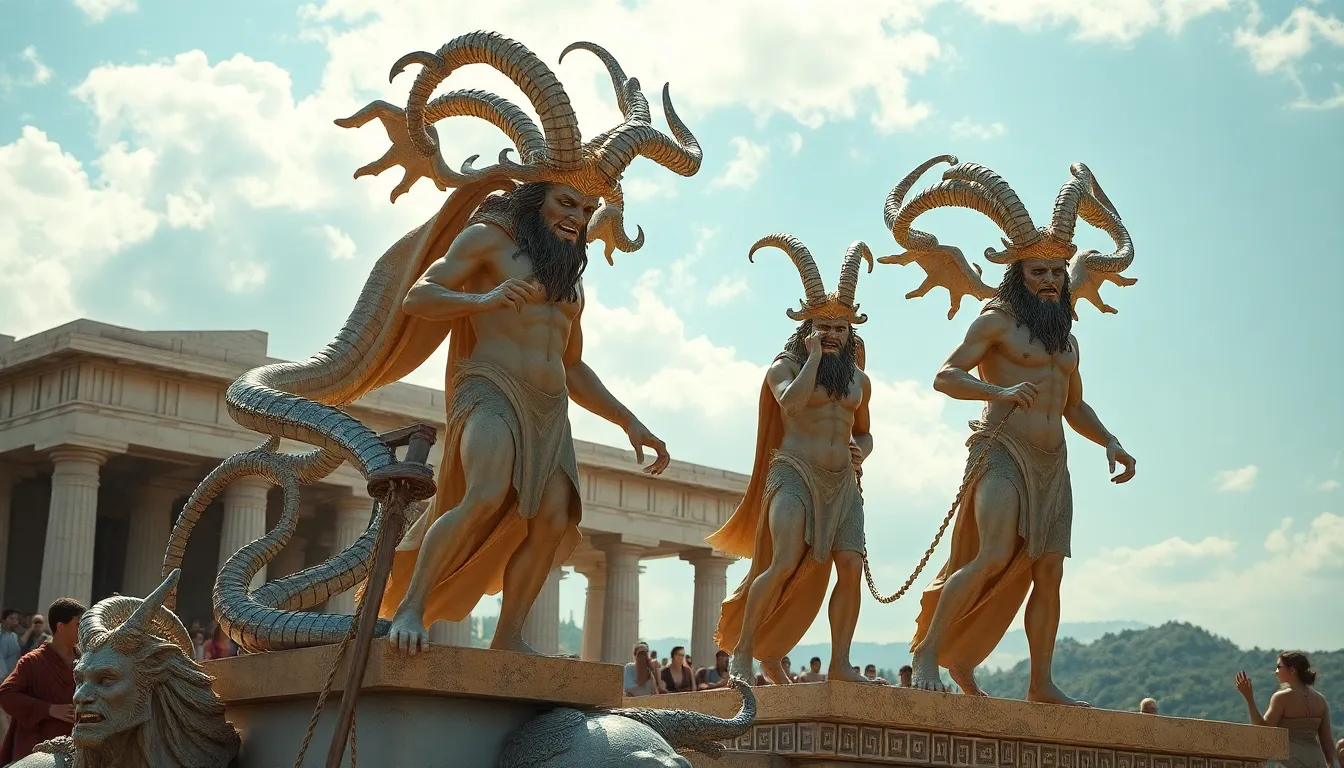Gorgons and Their Role in Ancient Greek Festivals
I. Introduction
In the rich tapestry of Greek mythology, Gorgons are among the most fascinating figures. Defined as monstrous women with snakes for hair, Gorgons like Medusa have captivated the imagination of people for centuries. Their cultural significance in ancient Greece transcended mere horror; they embodied complex themes of fear, protection, and transformation. This article aims to explore the multifaceted role of Gorgons in ancient Greek festivals, shedding light on their symbolism, artistic representation, and the rituals that celebrated them.
II. The Mythological Background of Gorgons
The Gorgons, primarily known through the character of Medusa, are often described as three sisters: Stheno, Euryale, and Medusa herself. Unlike her immortal sisters, Medusa was mortal and became the most famous of the trio due to her tragic fate and eventual slaying by the hero Perseus.
Symbolically, Gorgons represent both terror and transformation. They are embodiments of the fear that can arise from the unknown and the power that fear can wield. In myth, their gaze could turn onlookers to stone, illustrating the deadly consequences of facing one’s fears. This connection between Gorgons and fear is critical to understanding their role in ancient Greek culture.
III. Gorgons in Ancient Greek Art and Literature
Gorgons were prominently featured in ancient Greek art, particularly in pottery and sculpture. Their images often adorned vases, where they served as both decorative elements and protective symbols.
- Pottery: Gorgon images were frequently depicted on black-figure and red-figure pottery, often accompanied by scenes of heroes and mythological battles.
- Sculpture: Gorgon heads were carved into architectural elements, such as the Gorgon Medusa from the temple of Artemis at Ephesus, symbolizing protection against evil.
In ancient texts, Gorgons are mentioned by authors such as Hesiod and Ovid, where they are depicted as fearsome beings. Over time, their portrayal evolved from monstrous figures to symbols of female power and agency, reflecting changing societal attitudes towards women and fear.
IV. Festivals Celebrating Gorgons
Ancient Greek festivals were vibrant celebrations of culture, religion, and community. Notable festivals such as the Dionysia and the Panathenaea featured various aspects of Gorgon mythology.
- Dionysia: This festival honored Dionysus, the god of wine and theater, where Gorgon imagery was often used to represent chaos and transformation.
- Panathenaea: A festival celebrating Athena, the goddess of wisdom and war, included Gorgon representations in processions, symbolizing protection over the city of Athens.
The purpose of these festivals extended beyond mere celebration; they served to reinforce communal bonds, invoke divine favor, and confront societal fears through artistic expression.
V. Gorgons as Protective Figures
In addition to their terrifying aspects, Gorgons were also seen as protective figures. Their imagery was employed as apotropaic symbols, meant to ward off evil and misfortune.
- Rituals: Various rituals aimed at invoking Gorgon protection, especially during times of crisis, were common in ancient Greece.
- Gorgon Masks: Masks depicting Gorgons were worn during festivals, believed to imbue wearers with protective power and to frighten away malevolent spirits.
The significance of Gorgon imagery in festival settings cannot be overstated; it served as a reminder of the ever-present struggle between good and evil, chaos and order.
VI. The Role of Gorgons in Theater and Performance
Theater played a crucial role in ancient Greek culture, and Gorgons influenced dramatic performances significantly. Themes surrounding Gorgons were often woven into the narratives, emphasizing their dual nature as both monstrous and protective.
- Dramatic Performances: Gorgon themes appeared in tragedies, where they embodied the consequences of hubris and the importance of humility before the gods.
- Theatrical Storytelling: Gorgons contributed to character development, often serving as antagonists or symbols of inner conflict.
Examples of plays featuring Gorgon motifs include works by Aeschylus and Euripides, where the themes of transformation and fear are prevalent, showcasing the Gorgon’s complex role in storytelling.
VII. Modern Interpretations and Legacy
The fascination with Gorgons continues in contemporary culture, where they are often reinterpreted in literature, film, and art. Modern depictions frequently explore themes of empowerment and resilience, contrasting sharply with their ancient representations.
- Festivals Today: Many modern festivals draw inspiration from ancient practices, celebrating mythology and emphasizing community and cultural heritage.
- Artistic Expressions: Gorgons have become symbols of female strength and defiance in modern artistic expressions, reflecting evolving societal views.
The significance of Gorgons in today’s artistic landscape highlights their enduring legacy and the power of mythology to resonate across time.
VIII. Conclusion
Gorgons hold a vital place in the pantheon of ancient Greek festivals, embodying themes of fear, protection, and transformation. Their presence in art, literature, and performance illustrates how ancient beliefs shaped societal practices and cultural narratives.
Reflecting on the influence of ancient Greek mythology on modern perspectives offers insight into humanity’s continuous struggle with fear and the quest for empowerment. As we celebrate and explore these themes today, the legacy of Gorgons serves as a reminder of the richness of cultural history and the enduring impact of myth.




